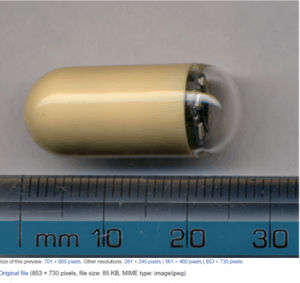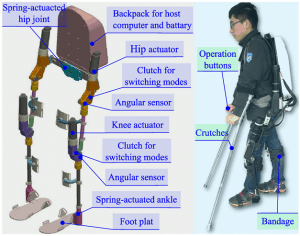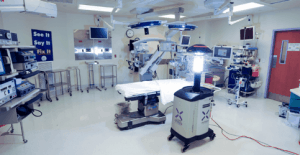Joan Cornet, Director Digital Health Observatory and Coalition of the Willing at ECHAlliance, shows some examples of successful use of robots in healthcare, and begins to discuss some of the ethical dilemmas we face as they are deployed more widely. This is Part Two in a series of articles. Read Part One.
In recent years we have observed the implementation of robots in clinical practice and in the care and follow-up of patients, especially in the elderly. There is currently an abundant offer in the market; and significant investment continues in the development of new and more effective robots.
Below, I show what I think are just some examples of the most remarkable examples of robots in clinical practice. Without a doubt it is a subjective option, but my goal is only to realize the advances in robotics applied to health.
The second part of this article raises some questions about ethics and the use of robots in clinical practice and their impact on the patient. The topic is complex, and will be the subject of a future article dedicated exclusively to ethical issues in health digitalisation
Da Vinci
Using the daVinci system, operations can be done with just a few tiny incisions and with the utmost precision, which means less bleeding, faster healing, and a reduced risk of infection. Da Vinci has been running for 18 years, being one the most successful robots.
Actuated and sensory prostheses
At the MIT Biomechatronics lab, researchers have created gyroscopically actuated robotic limbs that are capable of tracking their own position in three-dimensional space and adjusting their joints upwards of 750 times per second.
They have also developed bionic skins and neural implant systems that interface with the nervous system, allowing the user to receive tactile feedback from the prosthetic and control it as they would with a normal limb.

Endoscopy-Bot
An endoscopy is a procedure where a small camera or tool on a long wire is shoved into the body through a “natural opening” to search for damage, foreign objects, or traces of disease. It’s an uncomfortable and delicate procedure that might also be a thing of the past.
“Capsule endoscopies” take this procedure and reduce it to the simple act of swallowing a pill-sized robot. This then travels along your digestive tract gathering data and taking pictures that can be sent directly to a processor for diagnostics.

Orthoses (AKA Exoskeletons)
The Shenzhen Institutes of Advanced Technology (SIAT) lower-limb exoskeleton robot. The left is the mechanical structure diagram, and the right shows the exoskeleton worn by the human.
Targeted therapy micro-robot
These are highly promising, though relatively new types of medical robots. The basics of how they work is to use near-microscopic mechanical particles to localize a drug or other therapy to a specific target site within the body.
This could be used to deliver radiation to a tumor, or simply to reduce side effects of a medication by confining it to the organ where it might be needed.

Disinfectant bots
A robot being developed by Blue Ocean Robotics uses ultraviolet light to disinfect rooms. The Danish company is targeting the product first at hospitals, where there’s a high danger of patients contracting infections. In a 2011 study, the U.S. Centers for Disease Control said patients acquired 722,000 infections during treatment at health-care facilities in the U.S. that year and 75,000 of those patients died in the hospital.
The robot uses large ultraviolet lamps to kill bacteria. Basically, it zaps the nucleic acids within bacteria and disrupts their DNA, making it impossible for them to reproduce and carry out essential life functions. (3)
Clinical Training Bots
The idea of the robot is to allow medical students to come to grips with everything; from inserting tracheal tubes into a patient’s throat to using a defibrillator by giving them a mannequin to learn on before they move on to the real thing. However, while practicing operations is one thing, being able to perform them under pressure is quite another.
Companion robots
Not all the medical problems robots can fix have to be life-threatening. The fact is that there are millions of elderly, infirm, or mentally disabled people in the world who suffer from chronic loneliness and lack stimulation.
There has been a rapid increase in the population of senior citizens in many countries. The shortage of caregivers is becoming a pressing concern. Robots are being deployed in an attempt to fill this gap and reduce the workload of caregivers. More and more healthcare robots are perceived by trainee care professionals.
These patients also tend to be people who require regular check-ups from carers, which can be very time-consuming. Companion robots solve both of these problems at once and are truly making life better for a lot of people.
Robotic nurses
These robots shaped like a giant, gentle bear with a cartoonish head not only promise to make up for the shortage of carers but to save human personnel from having to carry out strenuous tasks, such as lifting patients out of bed 40 times a day.
ETHICAL AND LEGAL ASPECTS of IMPLEMENTING ROBOTICS IN HEALTHCARE
- The introduction of a robot into a healthcare situation adds complications to the assignation of liability if something goes wrong.
- There is the potential for damage to be caused to a patient, medical practitioner or other equipment if a robotic system malfunctions. Ethical issues arise in relation to agency and responsibility, with a need to establish who is in control and at what point a duty arises.
- Layers of liability come into play with the potential to apportion blame to designers, programmers, medical staff and even the patient as the end-user.
- The issues of liability, safety standards and trust are intrinsically linked to the acceptance and ultimate success of healthcare robotics. There is, however, a constant need to return to the rationale behind the implementation of this technology and the potential benefits it can bring.
- Questions need to be raised around the ethics of the implementation of these systems and whether they are being developed for human good and the enhancement of service provision or whether they merely represent a misguided attempt to cut costs and cut corners.
BIBLIOGRAPHY AND REFERENCES CONSULTED
- Five Ways Robotics Are Used in Medicine and Healthcare https://blog.robotiq.com/5-ways-cobots-are-used-in-medicine-and-healthcare
- From Surgeries To Keeping Company: The Place Of Robots In Healthcare https://medicalfuturist.com/robotics-healthcare/
- Robotics in Healthcare Industry? https://www.mercedestranscription.com/robotics-in-healthcare-industry/
- Can the four pillars of ethical healthcare withstand a wave of autonomous robots? https://ai-med.io/ethical-patients-relationships-robots/
- Ethics of healthcare robotics: Towards responsible research and innovation https://www.sciencedirect.com/science/article/pii/S0921889016305292
